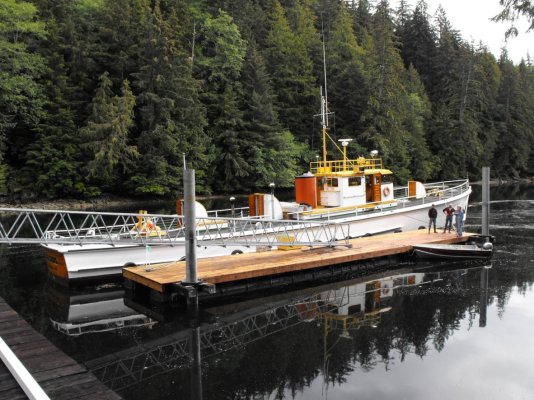I watched entire "Choose the best battery for your boat" video with Jeff Cote.
Good video - I have this question:
Per month, how much percent of their charge-level do you feel an isolated Flooded Lead Acid battery loses?
Jeff mentioned that Flooded Lead Acid batteries lose 15% of their charge per month. I've previously heard that 5% is their loss.
12/22/19 on my post #22 [
quoted above]... I mentioned not understanding Jeff Cote's statement: "Flooded Lead Acid batteries lose 15% of their charge per month". I also mentioned in that post: "I've previously heard that 5% is their loss."
Well... Due to reasons we'd not been able to visit our fun boat for a while.
So... this past weekend we visited our Tollycraft after
exactly four [4] months time lapse [to the day - per the log]. As always, when first aboard I immediately checked the multimeter I have hooked into our boat's four [4], #31, hooked in parallel, deep cycle, FLA house bank batts. The bank had lost approximately 20% of its charge; therefore it was discharged down to approximately 80% of a total charge.
Therefore... having officially [read by a high end multi meter] lost 20% charge in exactly four months means that my lifelong understanding of an average 5% charge-loss per month for previously 100% charged, good condition, totally isolated, FLA batts is reality. Not 15% per month.
Batts in house bank are about 1 yr old. Same exact type/size of batts I replaced were from 2010; they were still functioning, but with reduced power retention capability. The old batts in house bank also dropped approx 5% charge per month. All batts in boat are deep in bilge with surrounding water temp from 74 F in summer to 60 F in winter. I do not know what batt temp averages throughout the seasons. Will say that even in summer the bilge area does not get very hot... this I know, by often entering engine compartment throughout the year when aboard.
We always leave all batts 100% charged and 100% isolated... except for bilge pump float switch. We also isolate the boat from the berth with four docking lines and from dock power... for limited metal corrosion.
Must admit we do have a trickle charge solar panel on flying bridge face for making sure the genset battery can never go dead while we're out and about in the water. That said, the solar panel does us no good under roof at covered dock we've kept our Tolly in since April, 2009.


